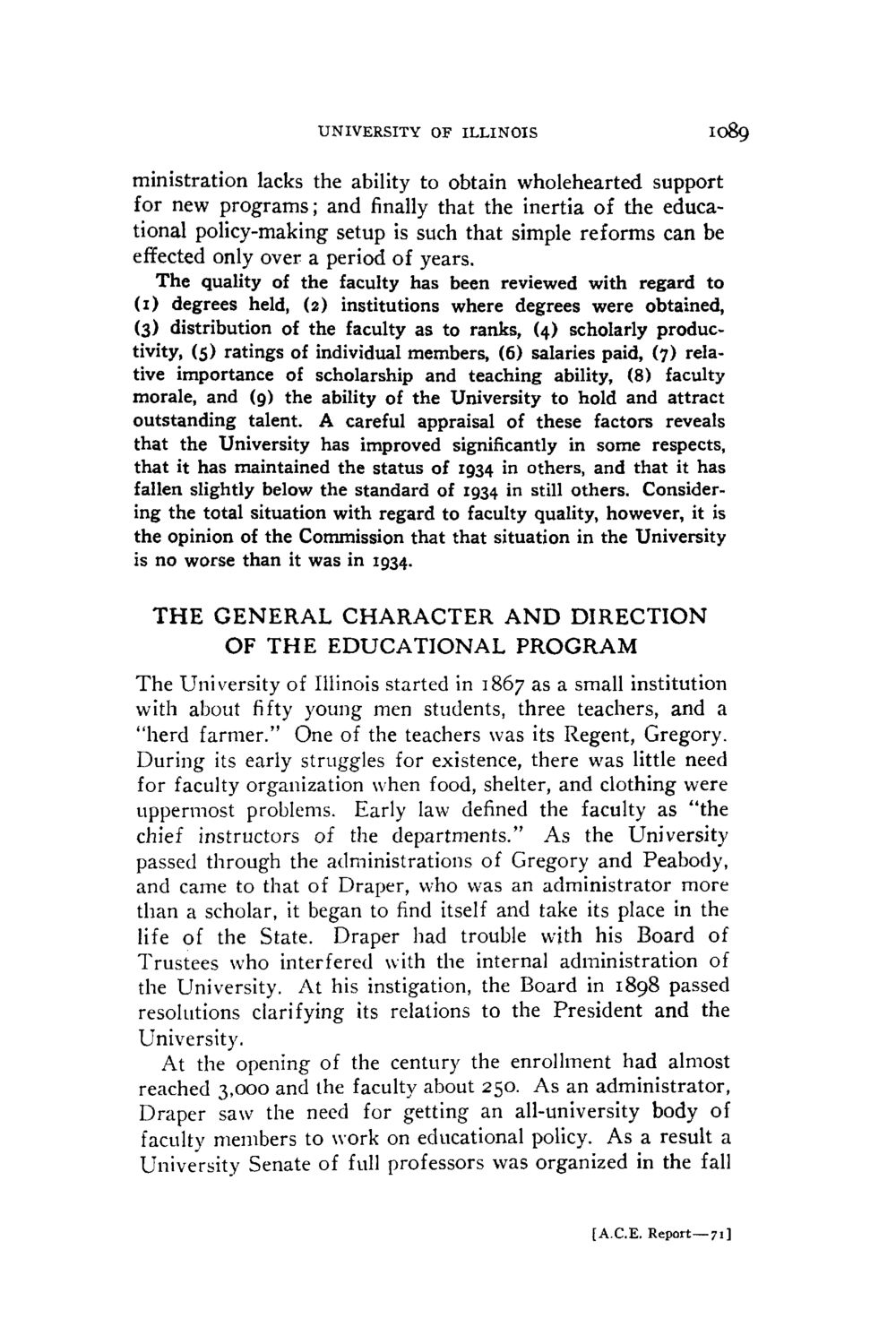| |
| |
Caption: Board of Trustees Minutes - 1944
This is a reduced-resolution page image for fast online browsing.

EXTRACTED TEXT FROM PAGE:
UNIVERSITY OF ILLINOIS I089 ministration lacks the ability to obtain wholehearted support for new programs; and finally that the inertia of the educational policy-making setup is such that simple reforms can be effected only over a period of years. The quality of the faculty has been reviewed with regard to (1) degrees held, (2) institutions where degrees were obtained, (3) distribution of the faculty as to ranks, (4) scholarly productivity, (5) ratings of individual members, (6) salaries paid, (7) relative importance of scholarship and teaching ability, (8) faculty morale, and (9) the ability of the University to hold and attract outstanding talent. A careful appraisal of these factors reveals that the University has improved significantly in some respects, that it has maintained the status of 1934 in others, and that it has fallen slightly below the standard of 1934 in still others. Considering the total situation with regard to faculty quality, however, it is the opinion of the Commission that that situation in the University is no worse than it was in 1934. THE GENERAL CHARACTER A N D DIRECTION OF T H E EDUCATIONAL PROGRAM The University of Illinois started in 1867 as a small institution with about fifty young men students, three teachers, and a "herd farmer." One of the teachers was its Regent, Gregory. During its early struggles for existence, there was little need for faculty organization when food, shelter, and clothing were uppermost problems. Early law defined the faculty as "the chief instructors of the departments." As the University passed through the administrations of Gregory and Peabody, and came to that of Draper, who was an administrator more than a scholar, it began to find itself and take its place in the life of the State. Draper had trouble with his Board of Trustees who interfered with the internal administration of the University. At his instigation, the Board in 1898 passed resolutions clarifying its relations to the President and the University. At the opening of the century the enrollment had almost reached 3,000 and the faculty about 250. As an administrator, Draper saw the need for getting an all-university body of faculty members to work on educational policy. As a result a University Senate of full professors was organized in the fall [ACE. Report—71]
| |